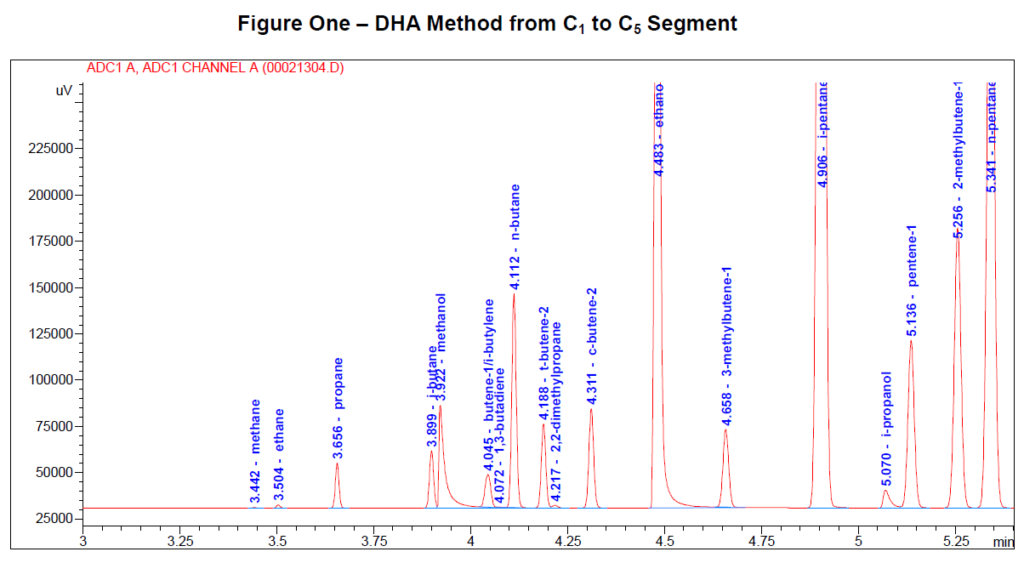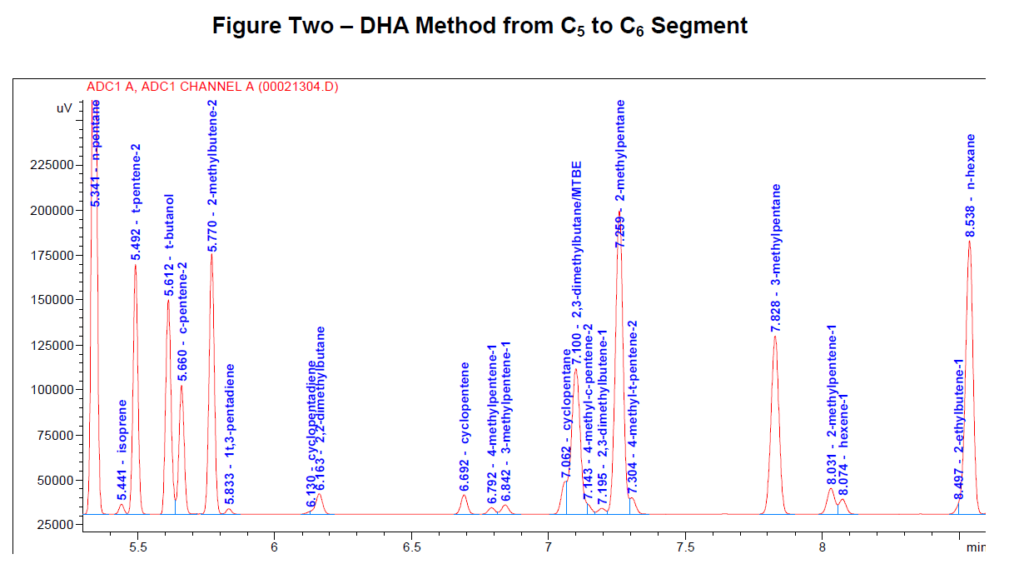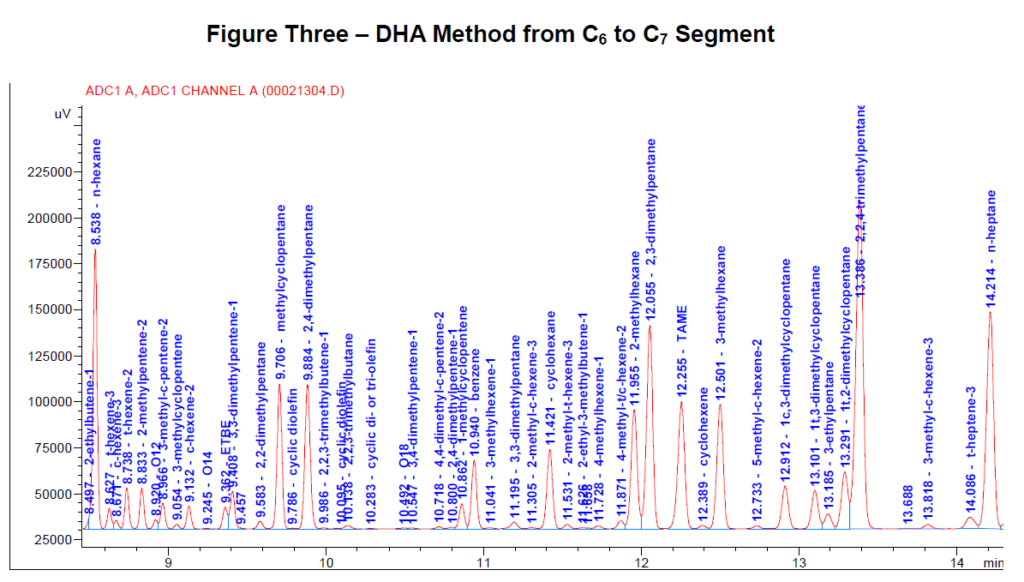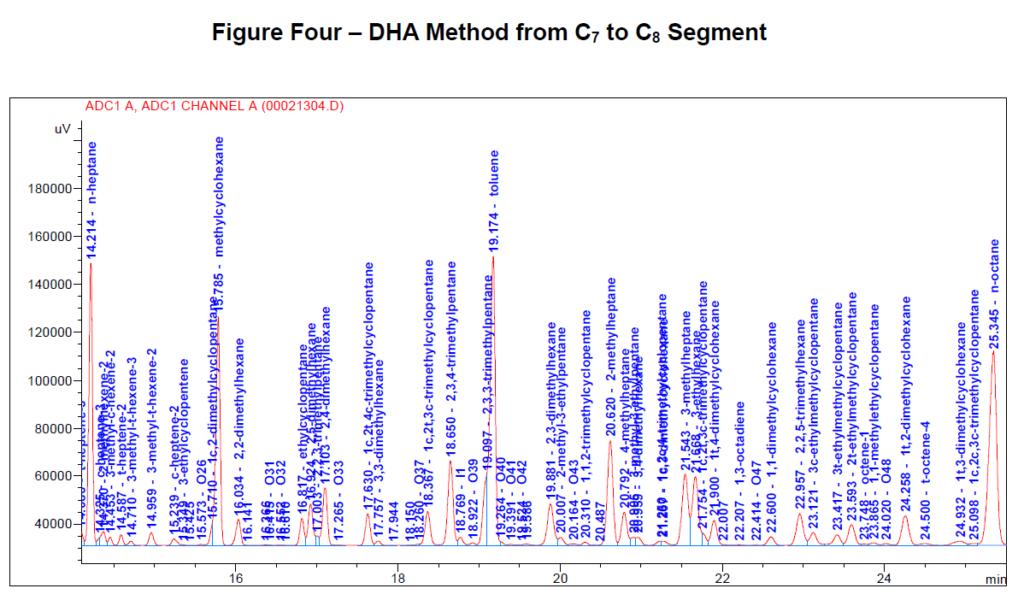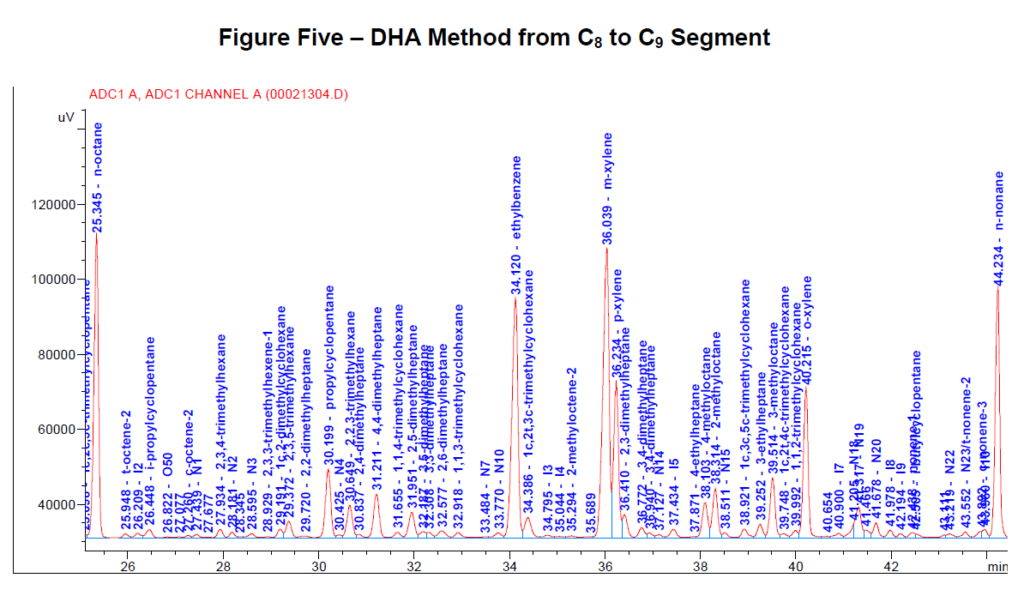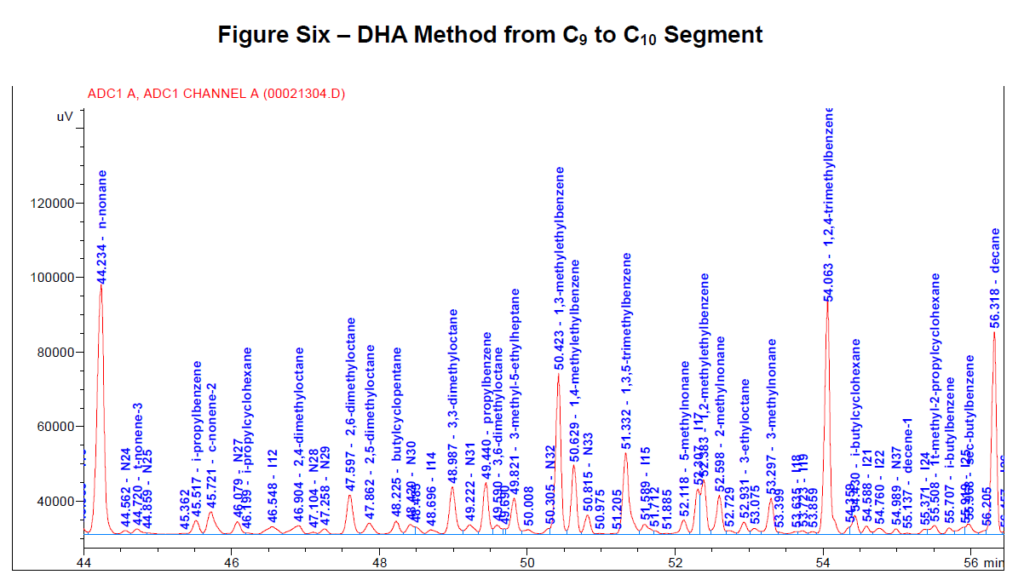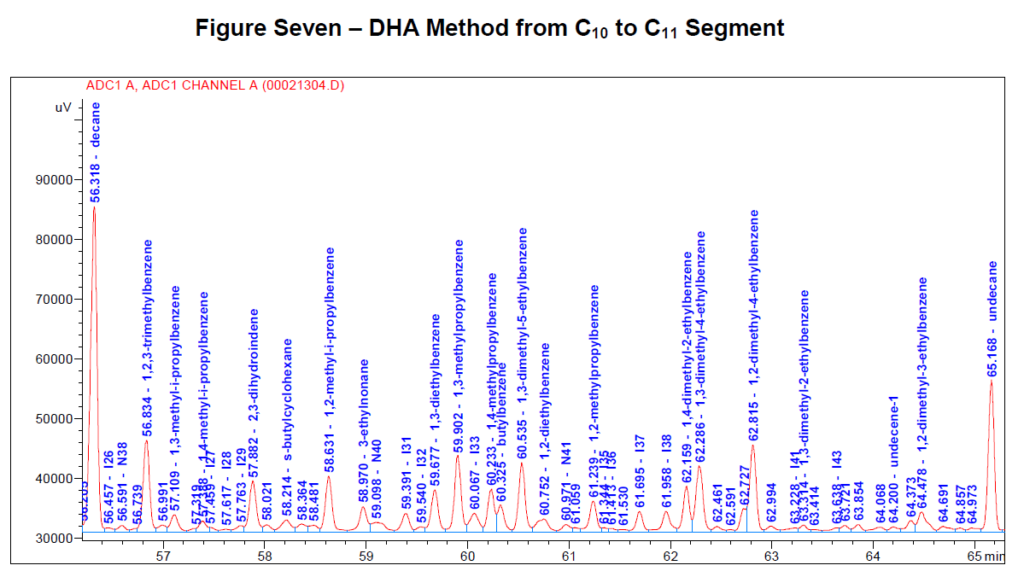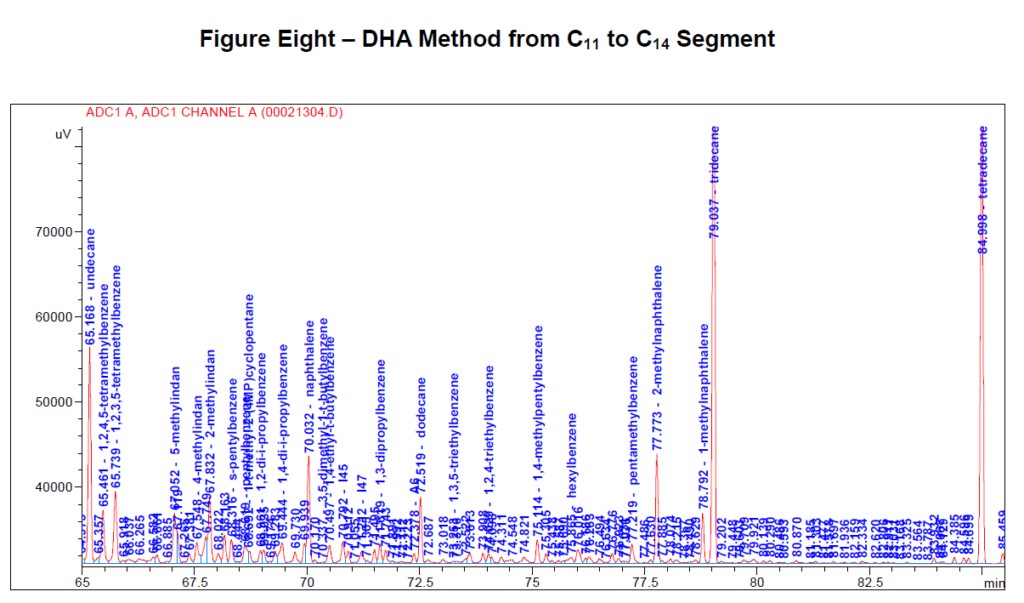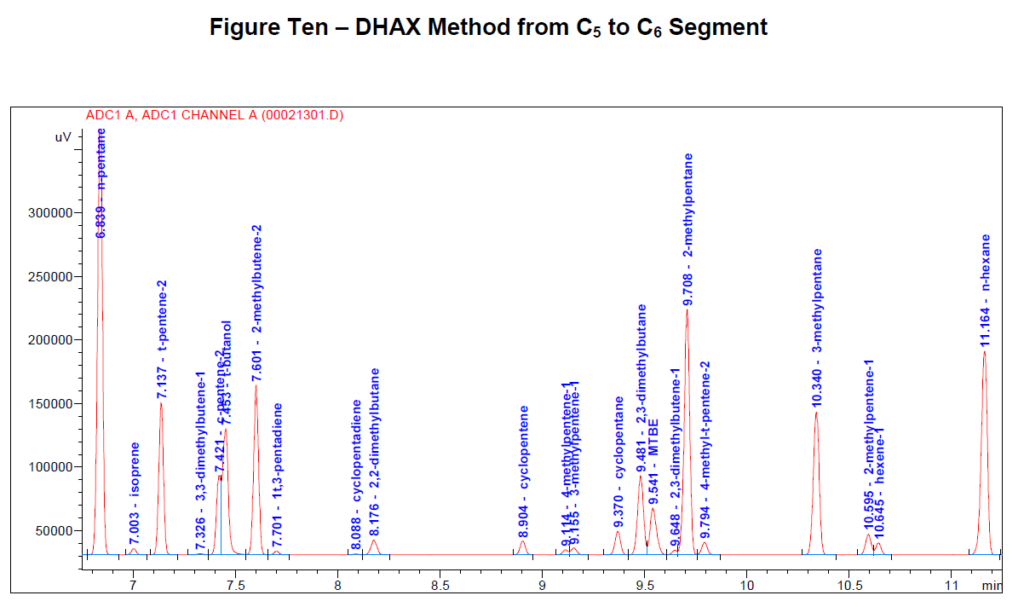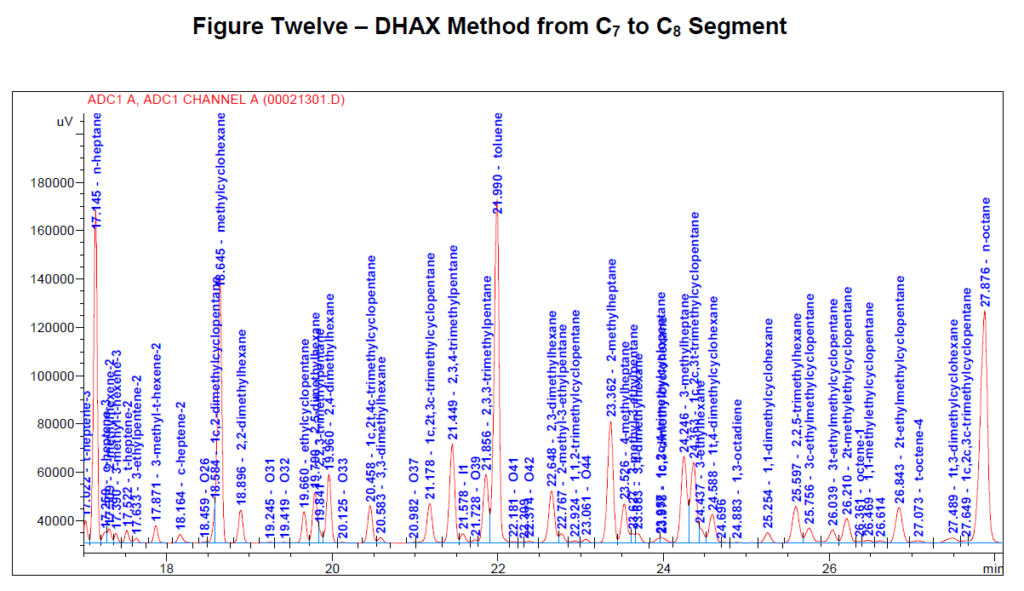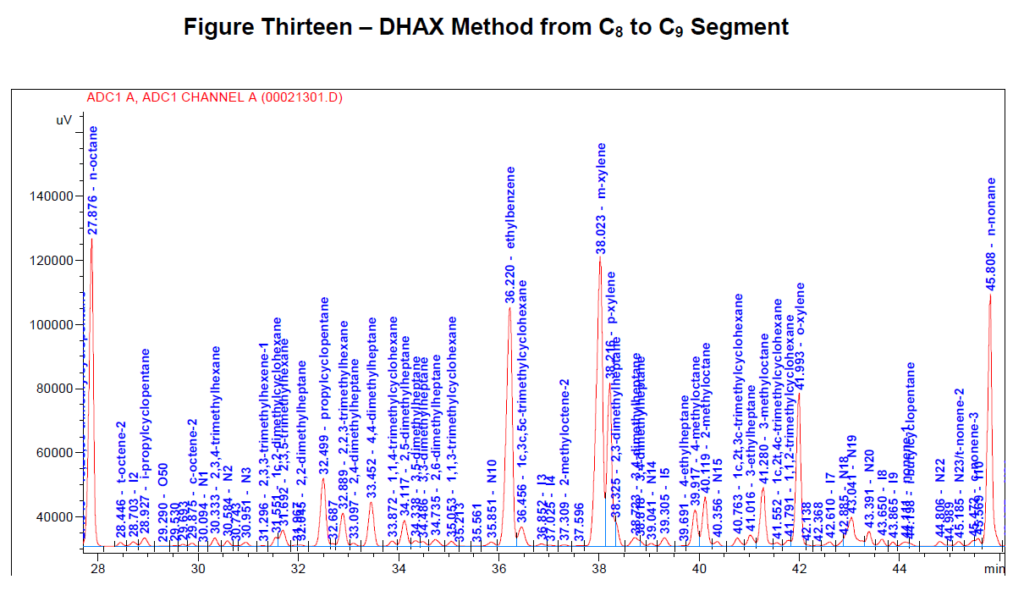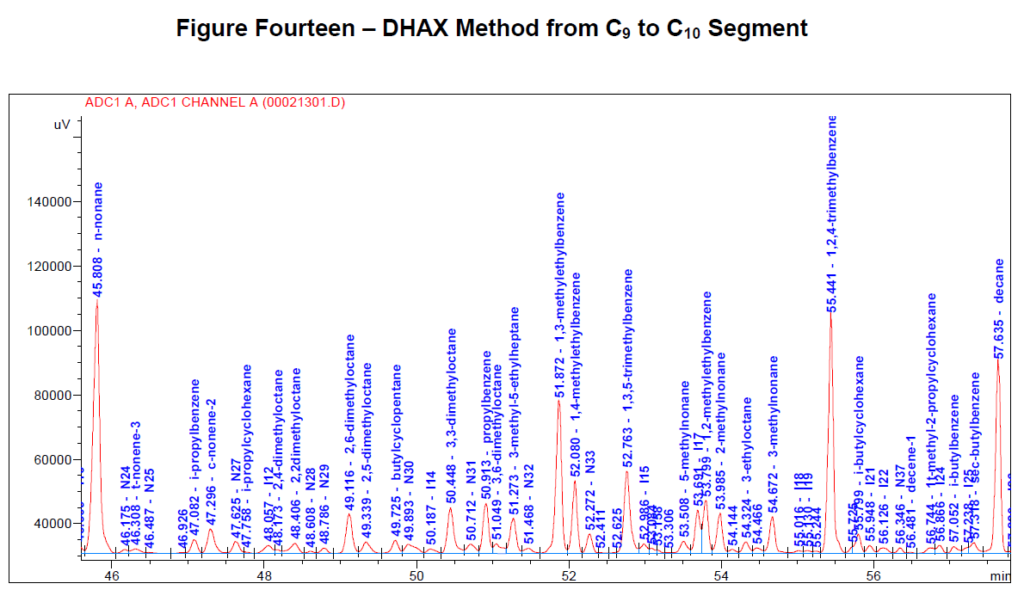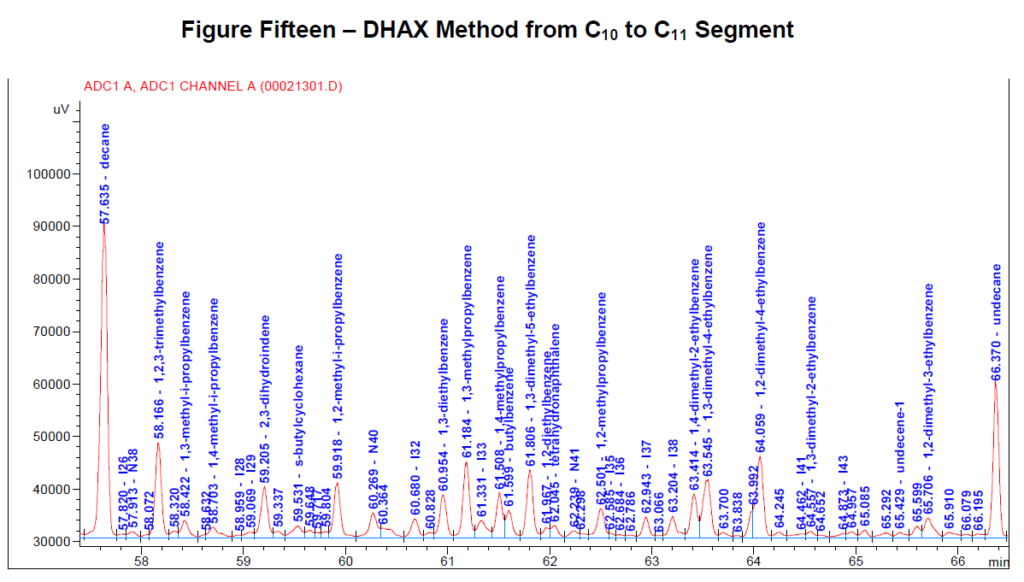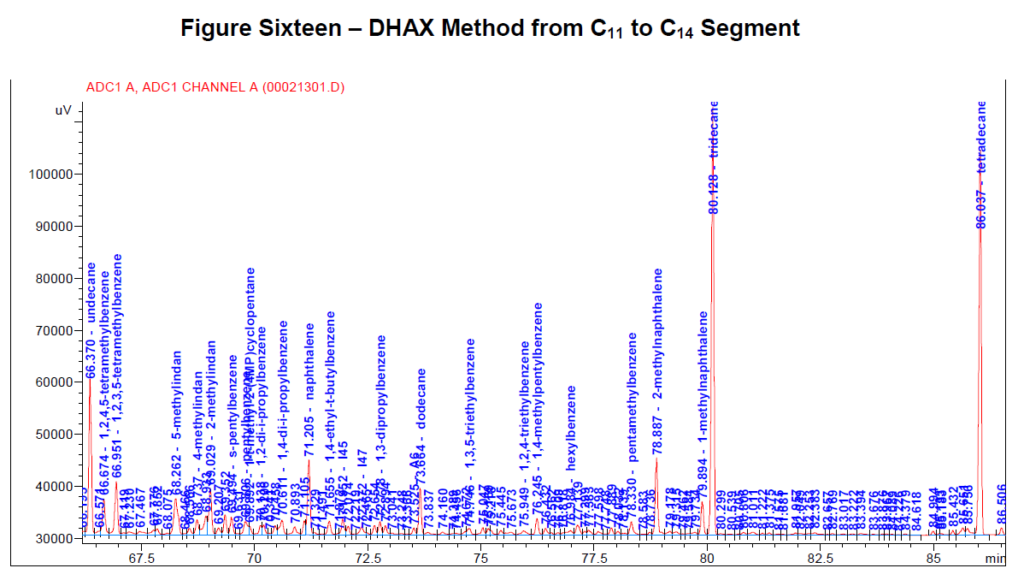ASTM D6730 Detailed Hydrocarbon Analysis (DHA) is a chromatographic method that determines the individual hydrocarbon components of spark-ignition engine fuels. It is often referred to as PONA and/or PIANO analysis. The official ASTM D6730 Method specifies the use of Helium as the carrier gas. In recent years Helium has become less available, and, as a consequence, more expensive. Switching to the use of Hydrogen as a carrier gas is not only more economical but its chemical properties affect linear velocities in a way that results in the added benefit of shorter analysis run times.
Posted below is an article originally written in 2000 by our good friend Neil Johansen. Neil was instrumental in developing the ASTM DHA Methods that we utilize today. In 2000 he took it upon himself to use hydrogen as the carrier gas and work out the operating conditions necessary to match the DHA component separations obtained using Helium. His original Technical Note is reprinted below in it’s entirety and with Neil’s permission.
Here is a pdf of the article available for download and printing: Faster DHA
New DHA-DHAX Methods Using Hydrogen
A report (A New DHA (above ambient start) Method, 01/12/2000) was issued describing the conditions for an optimum method for the analysis of gasoline range petroleum samples. That method employed helium carrier gas, while this current work provides optimized DHA and DHAX methods using hydrogen carrier gas.
A new J&W DB-Petro 100m x 0.25mm ID, 0.5μm polydimethylsiloxane liquid phase, was previously setup with a 3.5m x 0.25mm 1.0 DB-5 precolumn as prescribed for the DHAX method, and was reported earlier showing excellent conformity to the DHAX method. Hydrogen carrier gas flow rate was studied to establish the optimum practical flow rate for obtaining the required component separations. It was found that a pressure of 40psig giving a measured column outlet flow rate of 4.6 cm3/min. was the maximum usable without significant loss of column efficiency. Since the analyses were faster than when using helium, the column oven temperature profiles has to be re-established. The oven temperature program was established at:
DHA Method
7.5 min. @ 30ºC to 48ºC @ 14.0º/min. & 25 min. @ 48ºC to 200ºC @ 2.7º/min.
DHAX Method
5.0 min. @ 5ºC to 50ºC @ 7.6º/min. & 33 min. @ 50ºC to 200ºC @ 2.7º/min
The sample used for this evaluation is PONA-VI – a synthetic gasoline blended with various gasoline feed stocks and other added components.
Results
The DHA analysis is shown by the attached Figures One through Eight, while the DHAX analysis is shown in Figures Nine through Sixteen. The chromatograms are divided into normal hydrocarbon to normal hydrocarbon segments for convenience and since the method uses retention indices for identification purposes.
Original DHAX through C14 using Helium @ 43psig: 175 minutes.
New DHAX through C14 using Helium @ 66psig: 125 minutes.
New DHAX through C14 using Hydrogen @ 40psig: 88 minutes.
